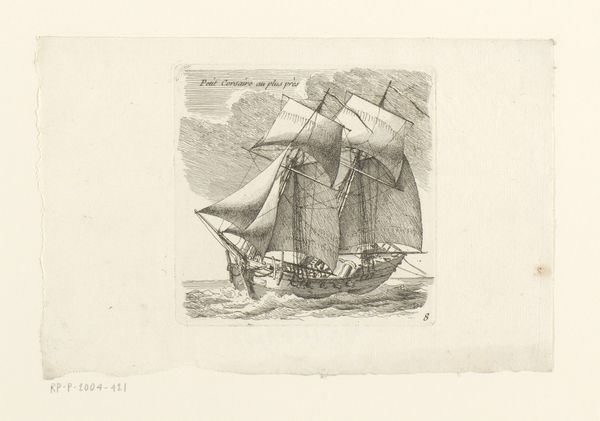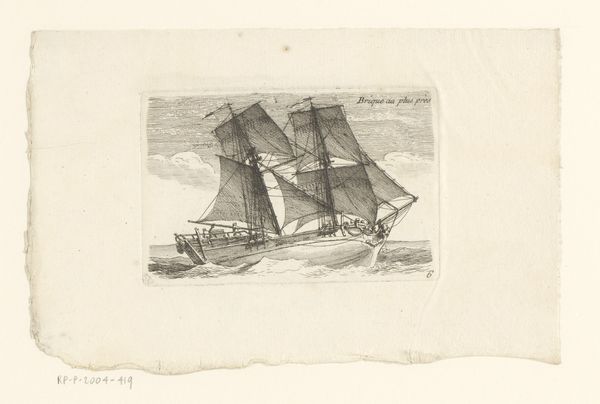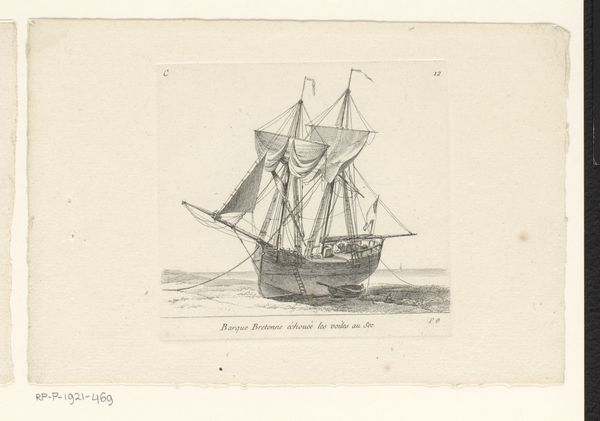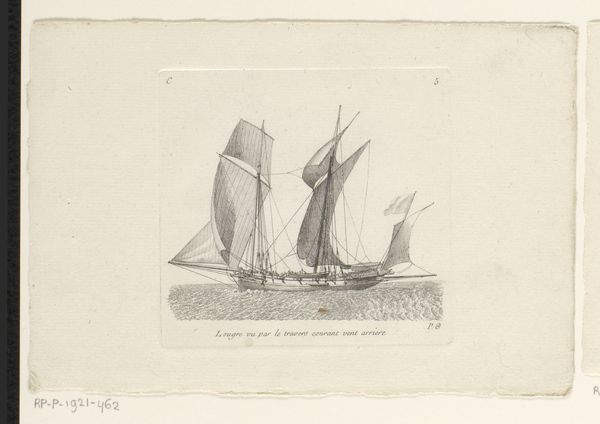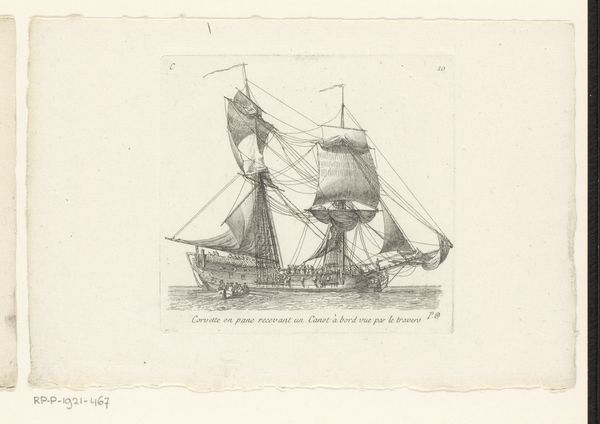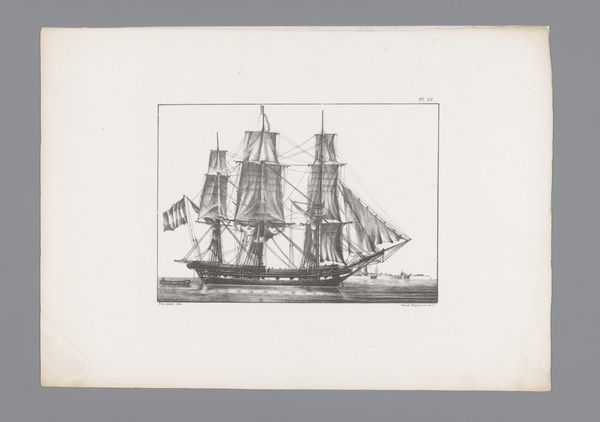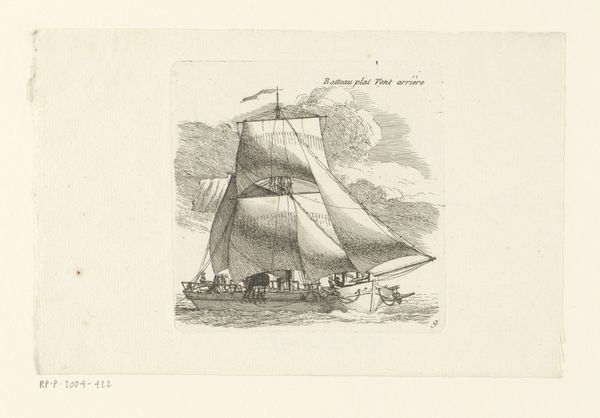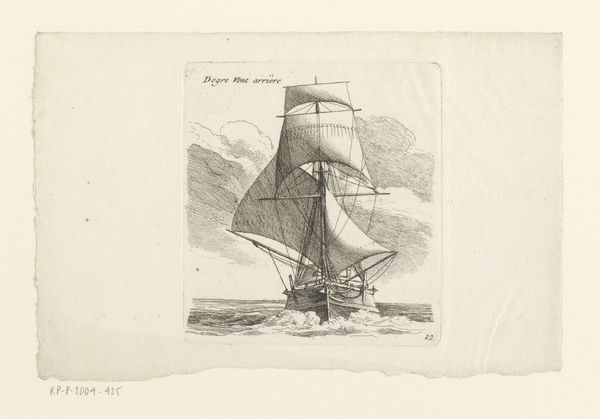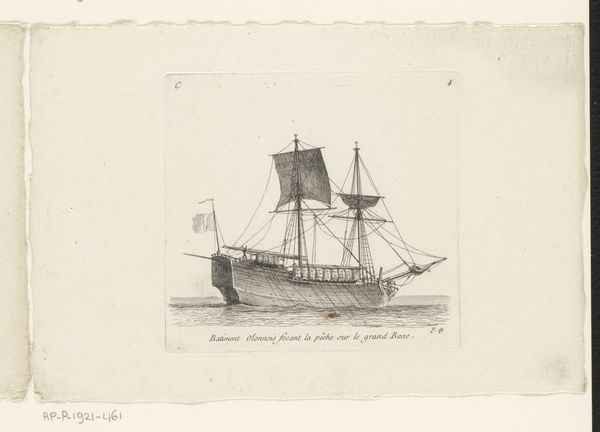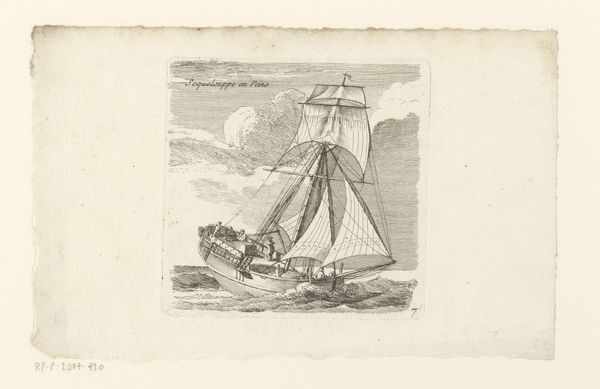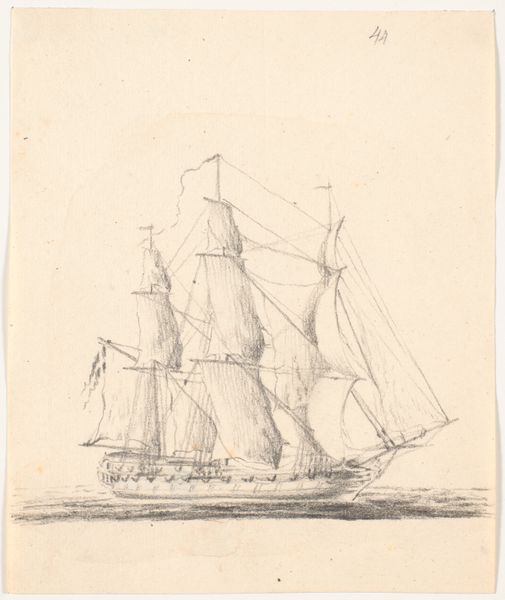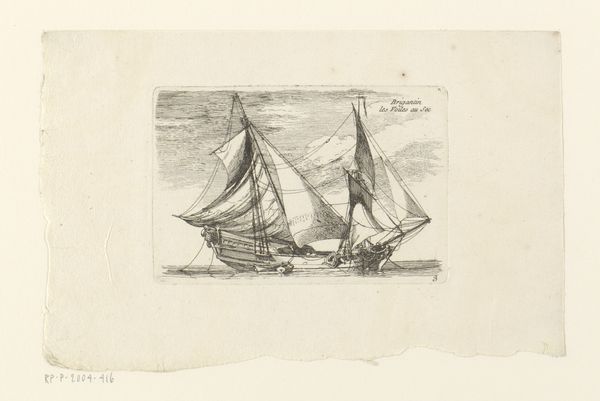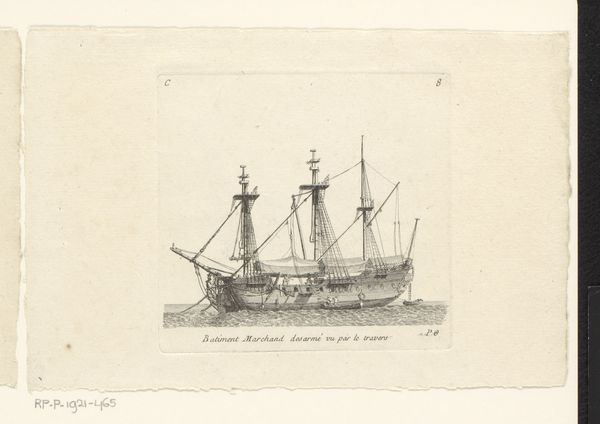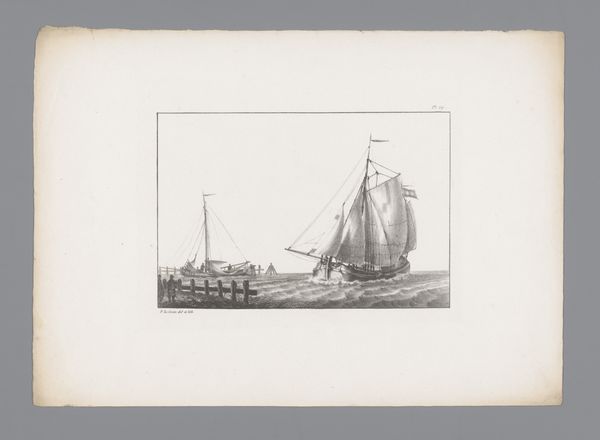
drawing, print, etching
#
drawing
#
light pencil work
# print
#
pen sketch
#
etching
#
pencil sketch
#
old engraving style
#
landscape
#
personal sketchbook
#
ink drawing experimentation
#
pen-ink sketch
#
sketchbook drawing
#
pencil work
#
genre-painting
#
sketchbook art
Dimensions: height 79 mm, width 120 mm
Copyright: Rijks Museum: Open Domain
Curator: Up next, we have "Zeilschip van dichtbij gezien," or "Sailing Ship Seen Up Close," attributed to Nicolas Marie Ozanne and estimated to have been created sometime between 1738 and 1811. The medium appears to be etching. Editor: Wow, it has such an ephemeral quality! It feels like I'm peeking into the artist's sketchbook during a particularly blustery day. The way the ship seems to almost levitate above the waves…it’s very evocative. Curator: It's remarkable how Ozanne uses such a minimal material palette—presumably ink on paper—to convey the drama of maritime life. Look closely at the details of the rigging and hull; you can almost feel the tension in the ropes, and understand that ship's construction. Editor: And those sketchy, almost frantic lines representing the waves? There’s an immediacy that transcends its historical context. It makes me think about the sheer labor involved in building and sailing a vessel of that size during that era. It was probably also terribly uncomfortable on the water. Curator: Indeed, this image provides insight into the material culture of maritime transport and commerce in the 18th century, while simultaneously capturing a sense of personal observation and reflection by Ozanne. Consider the economic implications of the artist making such studies... this wasn't merely for artistic pleasure! These were tools for recordkeeping and potentially designs to be replicated. Editor: That’s interesting. But honestly, I still keep returning to the emotion captured in the scene. You have this majestic, yet fragile-looking, ship battling the elements. You have a human drama written on water in hurried ink lines! I can feel a visceral sense of awe and vulnerability looking at the sketch. Curator: I suppose it depends what lenses we use to view the work. For me it speaks more about economic history, where this type of image served purposes beyond aesthetic contemplation. But it appears Ozanne was talented enough to transcend such functionality! Editor: Precisely. And that tension, that blend, I suspect that makes it timeless!
Comments
No comments
Be the first to comment and join the conversation on the ultimate creative platform.
